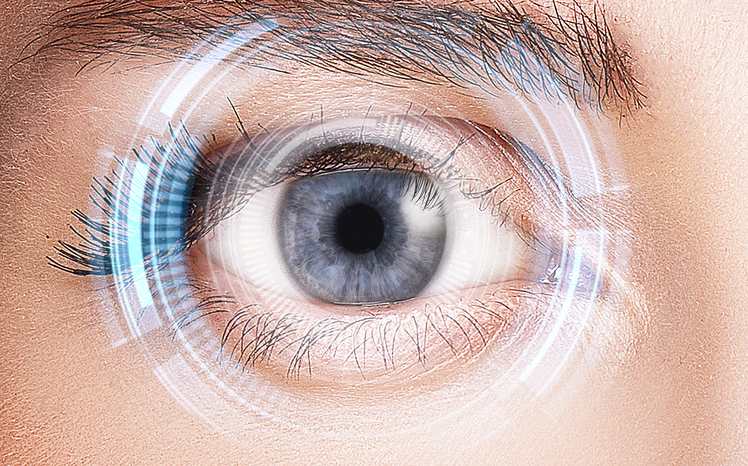Leading Retina Services Near Me: Professional Care for Your Eyes
Leading Retina Services Near Me: Professional Care for Your Eyes
Blog Article
Everything You Need to Know Regarding the Most Current Advancements in Glaucoma Therapy and Eyecare
In the realm of eye wellness, advancements in the therapy and management of glaucoma have been continuously advancing, leading the way for enhanced patient care and results. From advanced diagnostic devices that offer unmatched insights into the disease progression to cutting-edge medical strategies that promise better precision and quicker recuperation times, the landscape of glaucoma therapy is undertaking a considerable makeover. With the appearance of unique medication treatments, telemedicine services enabling remote monitoring, and a change towards individualized treatment techniques customized to specific patients, the field of eyecare is experiencing a paradigm shift. Keep tuned to uncover just how these latest developments are improving the strategy to glaucoma care and changing the future of eye health.
Advanced Diagnostic Technologies
Advanced diagnostic innovations play an essential role in the very early detection and tracking of glaucoma, enabling extra effective treatment and administration of the problem. Among these modern technologies, optical comprehensibility tomography (OCT) stands out as a non-invasive imaging strategy that gives comprehensive cross-sectional photos of the retina, optic nerve head, and retinal nerve fiber layer. This high-resolution imaging assists clinicians evaluate architectural changes in the eye brought on by glaucoma, enabling them to interfere quickly.
Furthermore, visual field screening, such as automated perimetry, is another necessary analysis tool for assessing glaucoma-related vision loss - retina service near me. This test measures the sensitivity of a client's visual field, helping to detect any kind of areas of vision loss or distortion. By incorporating OCT imaging with visual field testing, doctor can get a thorough understanding of the illness's progression and dressmaker therapy plans accordingly
Minimally Invasive Surgical Procedures
In the world of glaucoma management, the emphasis moves in the direction of minimally invasive medical treatments as a proactive method to resolve the progression of the problem adhering to innovative diagnostic evaluations such as optical coherence tomography (OCT) and visual field screening. Minimally invasive glaucoma surgical procedures (MIGS) have actually gained popularity due to their efficiency in lowering intraocular stress while reducing the risks and healing times connected with conventional glaucoma surgeries. These procedures are commonly done via tiny incisions, usually combined with cataract surgical treatment, making them much less intrusive and much more comfy for people.
Some common MIGS procedures consist of trabecular micro-bypass stents, which enhance the outflow of liquid wit, and micro-sized implants that improve water drainage in the eye. Additionally, laser treatments such as selective laser trabeculoplasty (SLT) use a non-invasive choice for decreasing intraocular pressure. By incorporating these minimally invasive strategies into glaucoma management, ophthalmologists can offer clients with effective therapy choices that prioritize security and quick recovery, ultimately improving long-lasting end results for individuals with glaucoma.
Unique Drug Treatments
Emerging medication treatments existing encouraging avenues for improving the pharmacological administration of glaucoma, using innovative strategies to address intraocular stress control and disease development. One unique drug therapy that has actually amassed interest is Rho kinase preventions. These medicines function by targeting the Rho kinase path, which contributes in controling the tone of the trabecular meshwork, the eye's drain system. By hindering this pathway, Rho kinase preventions help to enhance aqueous humor discharge, thereby reducing intraocular stress.

Telemedicine and Remote Tracking
With the advancement of novel medication therapies broadening the treatment landscape for glaucoma, the combination of telemedicine and remote surveillance emerges as a critical element in enhancing person treatment and condition administration. By making use of telemedicine and remote monitoring, healthcare companies can enhance access to care, improve client compliance, and identify potential concerns early, leading to better results for individuals with glaucoma. Welcoming telemedicine and remote surveillance in glaucoma administration stands for blog a considerable development in optimizing individual treatment and therapy effectiveness.
Personalized Therapy Approaches
Advancing past typical one-size-fits-all techniques, tailored therapy approaches customized to specific patient characteristics are transforming the management of glaucoma. By customizing therapy plans based upon variables such as age, disease severity, lifestyle, and various other health problems, ophthalmologists can boost and enhance results person satisfaction.
Individualized therapy methods in glaucoma include an extensive evaluation of each individual's special profile. This may consist of hereditary testing to identify particular threat factors, imaging strategies to examine structural adjustments in the eye, and functional tests to examine aesthetic field loss. By integrating these customized understandings, medical care providers can create targeted treatments that attend to the underlying reasons for glaucoma development for each and every individual.
Moreover, improvements in innovation have made it possible for the development of customized treatment choices such as minimally invasive glaucoma surgeries (MIGS) tailored to the client's specific needs - hearing service near me. These treatments provide effective intraocular stress control with less difficulties, improving the overall high quality of look after glaucoma patients. Welcoming individualized treatment methods marks a substantial standard shift in glaucoma management, highlighting accuracy medication to supply tailored options for far better patient results
Final Thought
To conclude, the most up to date developments in glaucoma therapy and eyecare include progressed analysis modern technologies, minimally invasive procedures, unique drug treatments, telemedicine and remote surveillance, and tailored treatment techniques. These improvements are changing the method we treat and identify glaucoma, offering even more effective and customized alternatives for patients. By remaining up-to-date with these growths, healthcare experts can supply much better treatment and boost end results for people with glaucoma.

With the advancement of unique medication treatments broadening the treatment landscape for glaucoma, the combination of telemedicine and remote tracking emerges as a pivotal part in improving client treatment and illness monitoring. hearing service near me. i was reading this Welcoming telemedicine and remote tracking in glaucoma monitoring represents a significant development in enhancing individual care and therapy efficacy
In verdict, the newest developments in investigate this site glaucoma treatment and eyecare consist of progressed diagnostic modern technologies, minimally invasive surgical procedures, novel medicine therapies, telemedicine and remote tracking, and tailored treatment approaches.
Report this page